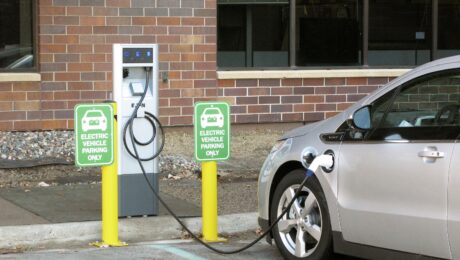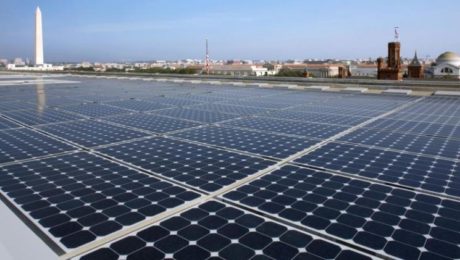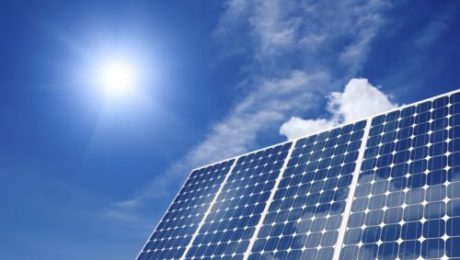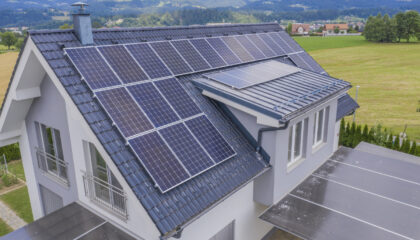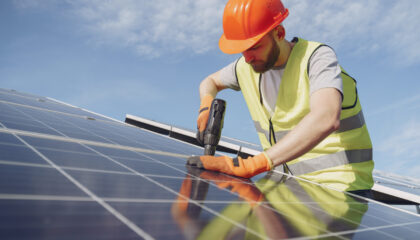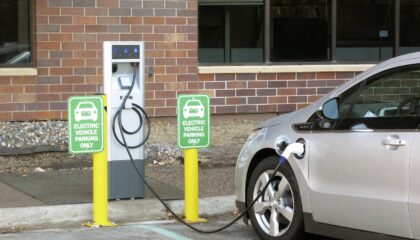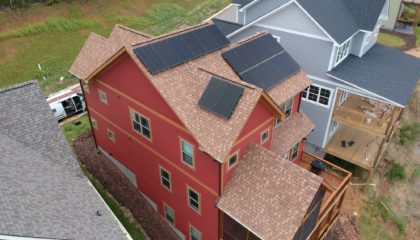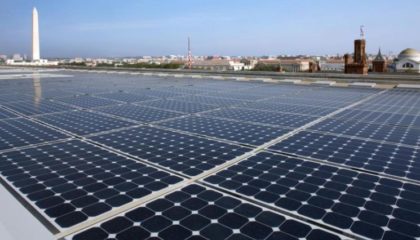EV Market Growth and Infrastructure Expansion
It really is a “Which came first? The chicken or the egg?” type of scenario. Do we jump in with both feet and flood the streets with EV’s or do we wait on the infrastructure expansion of hundreds of thousands of chargers to be installed?
Those of us that are in the market for our first electric vehicle often worry about range and charging options. We understand that the infrastructure isn’t nearly where it needs to be for longer trips. With EV sales numbers multiplying each year, we also understand that if the infrastructure doesn’t start expanding right now then it will become increasingly more difficult to find an available/open charging station. Recent projected numbers from leading automobile manufacturers show literally hundreds of new EV models hitting the market in the next 3-4 years.
Like a lot of things in the energy sector, solar energy not excluded, favorable policy will be necessary to make progress for EV infrastructure. Electric utilities, in general, see the gigantic opportunity before them to expand as the EV market grows. However, it seems many utilities are not eager to move forward with investments until the rubber hits the road. This hesitation to invest slows expansion and ultimately delays our transition towards electric vehicles. It will take effort on the consumer end to move forward. Pressure will need applied on utility commissions, political representatives, and communities.
To further complicate things, the declining fossil fuel industry is fighting with everything it has left to lobby against EV’s. The oil industry has requested additional fees for EV’s and lobbied to overturn subsidies for EV purchases, chargers, and infrastructure. Despite combustion engine vehicle bans in targeted cities throughout the world, the oil industry is still battling for a path forward. Our representation that is beholden to the oil industry will also stifle progress.
If you are interested in joining the effort to electrify our transportation systems here in the US, we encourage you to reach out to local groups already in the trenches. Many existing groups that are already out there trying to make a difference would welcome your support.
We have found that individuals with interest in EV’s and solar energy tend to be aware of climate change, and are active in reducing their carbon footprints. Many of our customers are already EV owners or soon will be. If an EV is in your future, we would love to talk to you about expanding your solar energy system or installing a new solar energy system that will cover your driving needs.
Read more:
https://www.politico.com/story/2019/09/16/oil-industry-electric-car-1729429
- Published in Climate Change, Policy
Mammoth Fossil Fuel Subsidies
Subsidies in the form of tax credits, rebates, and other incentives for clean energy have been a major contributing factor to the growth of solar installations in recent years. Detractors of renewable energy often use the argument that renewables cannot survive without these subsidies. What these detractors are often not aware of is the staggering amount of fossil fuel subsidies spent both nationally and internationally on the fossil fuel industry. Fossil fuel subsidies keep the cost of this outdated and dirty energy source affordable to the public.
Recently the International Monetary Fund released a report with some scary findings: China and the United States are the two leading players in the world, spending well over 25% of the global GDP in 2015 on oil, gas, and coal subsidies. In the United States, we spend more money subsidizing fossil fuels than on our entire military defense budget- yes, you read that correctly. We spent over ten times the funds defending outdated fossil fuels than what was approved for education.
Besides the almost unfathomable monetary amount spent, there is also a huge toll on human lives and welfare. Another recent study shows that if fossil fuels would have been fairly priced starting in 2015, carbon emissions worldwide would be reduced by almost 30% and nearly half of human lives lost to air pollution could have been saved.
As a part of the solar and renewable energy industry, we believe government subsidies should be aligned with the welfare of all people and the progression of technology, jobs, and sustainability. The International Monetary Fund determined without fossil fuel subsidies, the global net economic gains would have been more than $1.3 trillion. The findings of these reports are shocking and we hope this information may serve as a wake up call to how important it is that we make the switch to renewable energy.
- Published in Policy
DC’s Ambitious Clean Energy Requirement
Recently, Washington D.C.’s city council voted unanimously to require the district to use 100% renewable energy by 2032. Additionally, all public transport vehicles and privately-owned fleets will be required to be emissions free by 2045. With the threat of climate change becoming more and more prevalent, this fast-tracked plan will hopefully set a precedent across the country. Quite a few cities have already set renewable energy goals, but D.C. has by far the biggest. There are only two statewide policies, in California and Hawaii, of becoming 100% renewable energy dependent. As we see federal regulations becoming more lax, it is inspiring to see so much change at the lower levels of government.
Much of the funding for this initiative will come from large utility companies who will be making payments into the Renewable Energy Development Fund. Some D.C. residents are already paying additional rates for using natural gas and electricity, which have been funding the REDF. Part of the funding will be allocated to low-income residents, as transitioning a home to clean energy can require more of an upfront cost.
With this push for clean energy, we are pleased to see a boom in solar energy. Washington D.C. mandated that at least 10% of its energy be from the sun by 2041. On the other side of the country, California has already implemented a requirement that every new construction build to include solar panels. There have been countless smaller solar subsidies in other areas that have progressed the industry; including North and South Carolina.
Read more:
- Published in Climate Change, Policy, Solar News
Four Decades of Dropping Solar Prices Explained
Did you know the price of solar energy has dropped 99% since its major debut four decades ago?! A recent analysis by MIT researchers contributes this radical reduction in pricing to not only innovations in technology but also, and mostly, to government policy.
Solar energy, not unlike most technologies, has benefited greatly from the common contributors: research and development, private investment, and growing economy of scale. Researchers found that private investment and R&D only got the technology so far in its early years. It wasn’t until policy began stimulating market growth that solar energy really began to advance. Policy changes included renewable portfolio standards, feed-in tariffs and subsidies. With government invested in the growth of solar energy technology R&D funding followed; this funding accounted for even more reduction in costs.
Now, with a much larger economy of scale, manufacturers had the financial means to push the limits and reach for greater efficiencies from the many pieces of equipment used in solar energy systems. Solar panels themselves continue to become more energy dense; capable of capturing more energy given a smaller surface area. Inverters are nearing 100% efficiency and utility grids are adapting to make better use of distributed energy sources.
With these findings it is easy to see how policy can play a critical role in the progress of technology. Researchers feel that there is still more to come for the solar industry and see potential for continued advancements in the technology and also further reductions in costs.
To read the article in full please follow the link:
https://www.sciencedaily.com/releases/2018/11/181120073818.htm
- Published in Policy, Solar Energy
NC Solar Access Laws – Your Right to Solar Energy
There is a lot to consider when making the decision to put a solar energy system on your home- upfront financial costs, tree shading on your roof, your home’s roof orientation (North/South, East/West), and environmental benefits- but HOA regulations should not have to be a factor. When initially talking to people considering solar power, they are often worried that their HOA will not allow anyone in the neighborhood to install solar panels and that is, by law, false.
According to North Carolina Senate Bill 670, there are solar access laws that give the homeowner power over local ordinances to “utilize solar radiation” as energy on their “detached single-family residence” homes.
Occasionally homeowners associations will ask that a solar array not be visible from a road or common area of a neighborhood. If the orientation they request is “preventing reasonable use” of the solar panels, this is an illegal request. For example, if an HOA asks you to put the solar array on the back of your home which happens to be in a shaded or north-facing area, you are by law allowed to still install a solar energy system on the front side of your roof. It is illegal for the price to be driven up “beyond the financial means” of homeowners, which would result from an under-producing system.
If you are interested in installing solar panels on your home and believe you are under HOA restrictions, please contact us to start a conversation with our knowledgeable staff. Although we know the law is on our side, our first step is to talk tactfully and kindly with your homeowners association and neighbors to ensure your access to clean energy production. For more details, and all legal verbiage, please review the bill here.
- Published in Policy, Residential Installation, Tips and Tricks
Australia Offering Battery Subsidies
Similar to the rebate that Duke Energy is offering locally here in North Carolina to its customers for the installation of solar energy, the Southern Australian government has just announced a $70M subsidy for residential battery systems. Currently, batteries are by far the most expensive aspect of a solar energy system but are not necessary components unless your goal is to be completely off-grid or have sustainable backup power during power outages. Adding batteries to a solar energy system can tack on an additional $10,000 or more, but this subsidy would offer up to $6,000 back to homeowners; making batteries a more realistic option.
The goal of the battery subsidy is to provide 40,000 households with energy storage systems to reduce peak hour energy usage. Removing this large of a load from the grid will drastically reduce demand of traditional energy power plants thus lowering the cost of energy for every customer.
For traditional energy sources, such as coal fired power plants, it is very costly to ramp up production to meet peak demands. Unexpected peak demands are worse in that, in some cases, it may take hours for a plant to drastically increase production to meet an unplanned, sudden demand. Unexpected peak demands can cause blackouts (loss of power) and brownouts (low voltage) in the event that the power plant cannot meet the sudden increase in load.
Hopefully we can expect more clean energy incentives such as this in the US as we see the positive implications they have had in other progressive countries.
Interested in a free quote for battery backup power for your home or business? Give us a call!
Click Here for more information and original article.
- Published in Policy, Solar News
- 1
- 2

